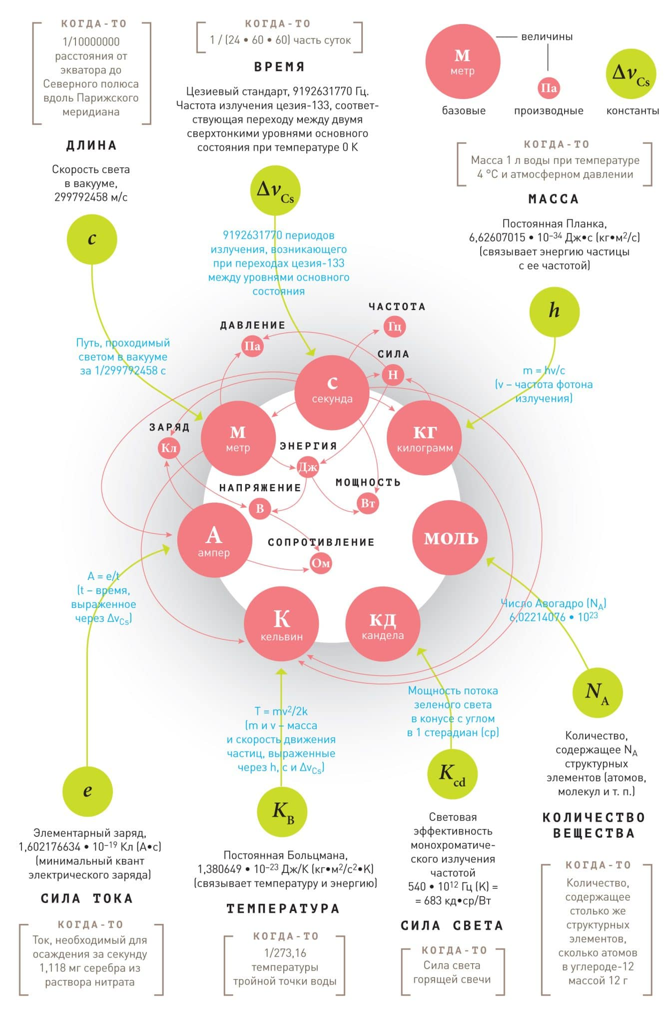Physicists believe that a single constant—the second—is sufficient for measuring everything.
In 2002, scientists from CERN (CERN, the European Organization for Nuclear Research, which focuses on fundamental physics) realized that they did not share a common opinion regarding the necessary minimum of constants needed to describe the entire observable universe. This came as a surprise: high-level specialists studied the same reality using complex and precise instruments, yet they could not agree on which quantities were truly essential.
“Fundamental constants” are values whose numerical values do not depend on external parameters and remain unchanged over time. With a certain set of constants, it is possible to calculate all other quantities.
CERN scientists Michael Duff, Lev Okun, and Gabriele Veneziano (Michael Duff, Lev Okun and Gabriele Veneziano) presented their views in an article where each described their own paradigm. The first requires three constants: meter, kilogram, and second. The second paradigm needs only the second and meter, while the third can vary in the number of constants depending on the theory being considered.
Now, Brazilian researchers claim that the number of fundamental constants depends on the space-time in which the physical quantities are examined. They believe they can describe all possible observations of reality using just one unit of time, the second.
In the current version of the International System of Units (SI), there are seven base units: meter (length), second (time), kilogram (mass), kelvin (temperature), ampere (electric current), candela (luminous intensity), and mole (amount of substance). Each of these is defined through a physical constant.
“These units are fundamental only from a practical standpoint. For instance, if someone needs to buy a light bulb, the number of candelas will indicate how intense its light will be. Additionally, some units can be defined through others,” noted theoretical physicist Professor George Matsas (George Matsas).

The aim of the new article is to find the most fundamental description of physics, to understand what is the minimum number of constants required to measure everything.
According to the criteria used by Duff, Okun, and Veneziano, the number of fundamental constants is related to the minimum number of independent standards necessary to express all physical quantities. The researchers analyzed two types of space-time: Galilean, the foundation of classical mechanics, and relativistic, the basis for Albert Einstein's General Theory of Relativity.
In Galilean space-time, all observable quantities can be expressed in terms of units of time and space, typically “second” and “meter.”
However, in relativistic space-time, only clocks, meaning “seconds,” are sufficient. In the theory of relativity, space and time are so interconnected that one unit is enough to describe all quantities. The high-precision atomic clocks used today can meet all measurement needs.
The definition of “second” today is based on a natural constant — the energy difference between two specific levels of the electron shell of a cesium-133 atom. One second (1 s) is the duration of 9,192,631,770 periods of radiation corresponding to the transition between two hyperfine energy levels of the ground state of a cesium-133 atom at rest at a temperature of 0 K.
There are several relativistic space-times corresponding to various solutions of Einstein's equations. The simplest of these is Minkowski space-time, which is empty (without particles or other objects), homogeneous (all points have the same properties), and isotropic (all directions in space are equivalent). It is based on this example that the researchers outlined their approach. The authors noted that their findings could be generalized to any relativistic space-time. The study has been published in the journal Scientific Reports.